Prairie dropseed (
Sporobolus heterolepis) is an adaptable warm-season bunchgrass that is extremely drought tolerant and loves hot, dry soil. It has a delightful fragrance while in bloom but won’t self-seed and spread. It’s also a host plant to several skipper butterfly species, and songbirds love to eat its seeds.
Prairie dropseed is native to the tallgrass prairie region in the Central Plains, a once-prominent ecosystem that has shrunk to just 1 percent of its historic range. This plant is in decline in the wild but can make a beautiful and beneficial addition to your garden.
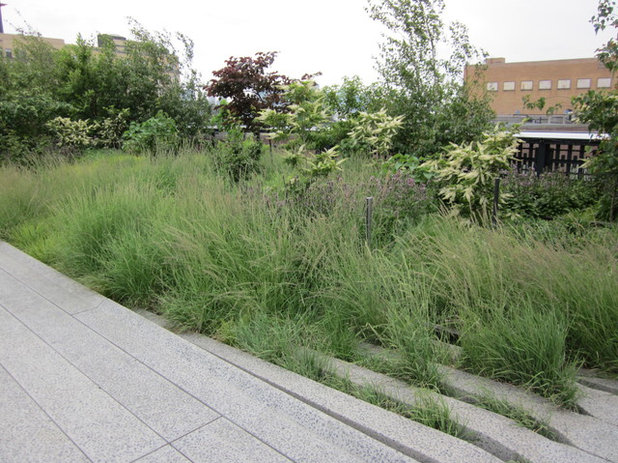
Prairie dropseed is seen here growing in Manhattan’s High Line, along with Japanese clethra (
Clethra barbinervis), betony (
Stachys officinalis ‘Hummelo’) and gray birch trees (
Betula populifolia ‘Whitespire’).
Photo by sharon_k
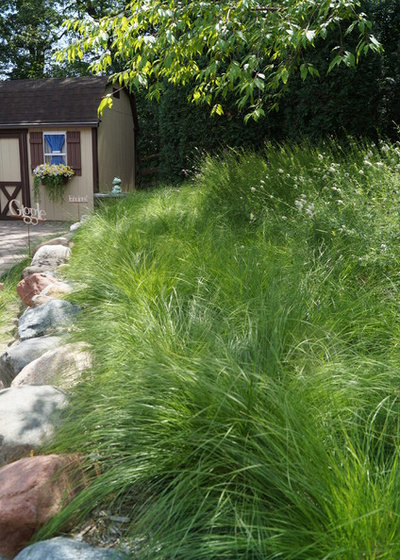
Prairie Restorations, Inc
Botanical name: Sporobolus heterolepisCommon names: Prairie dropseed, northern dropseed
Origin: Native from Colorado to Oklahoma and Arkansas, and north to Michigan, Indiana, Wisconsin, Minnesota and North Dakota; there are scattered pockets in the eastern Midwest and Northeast
Where it will grow: Hardy to -40 degrees Fahrenheit (USDA zones 3 to 8; find your zone)
Water requirement: Slightly moist to dry
Light requirement: Full sun
Mature size: 12- to 18-inch-tall foliage; 2 to 3 feet tall when in bloom; about 2 feet wide
Benefits and tolerances: Does great in dry, well-drained soils from clay to sandy to slightly rocky
Seasonal interest: Blooms are highly fragrant; stunning fall color
When to plant: Potted or bare-root plants can be planted from spring to early fall.
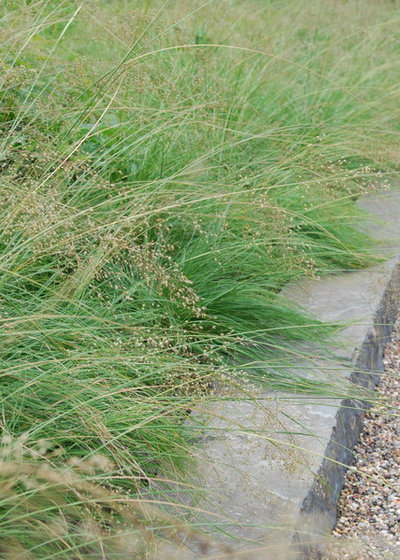
Paintbox Garden
Distinguishing traits. Prairie dropseed is arguably the most elegant native bunchgrass. Its bright green leaves weep in graceful arches; flowers appear in late summer to early fall and smell of popcorn, coriander or licorice, depending on your nose.
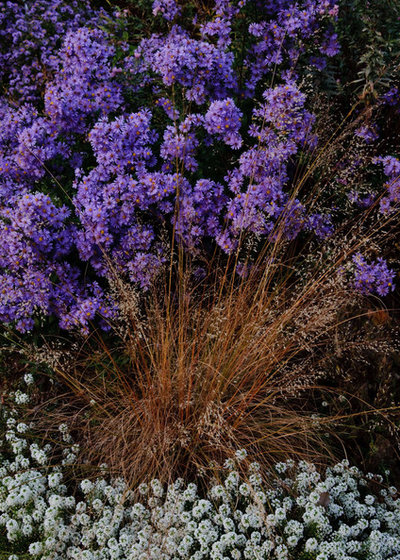
Barbara Pintozzi
The fall color peaks with bright yellows, oranges and rusts. Prairie dropseed is shown here in fall with smooth aster (
Symphyotrichum laeve ‘Bluebird’) and sweet alyssum (
Lobularia maritima).
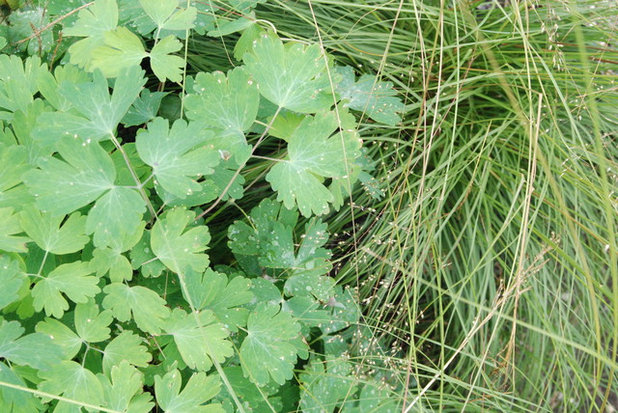
Paintbox Garden
Prairie dropseed with columbine (
Aquilegia canadensis).
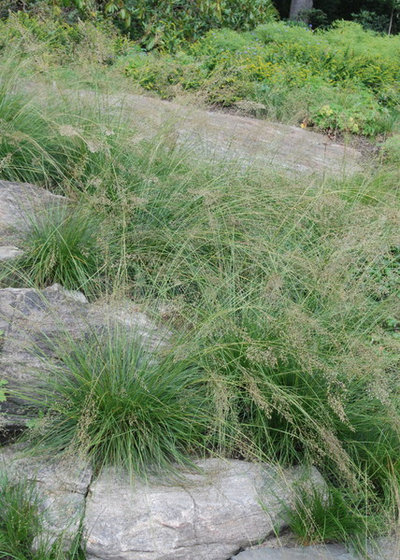
Paintbox Garden
How to use it. I’m a fan of placing grasses among perennial flowers where there are gaps — this cuts down on the need for wood mulch and helps create a thriving ecosystem for wildlife. Prairie dropseed is also great when planted alone in drifts or en masse. Since it’s a bunchgrass, it doesn’t spread — in fact, it rarely self-sows. Dropseed takes several years to reach mature size, so be patient as it puts down deep roots to weather any drought.
Planting notes. Sandy, rocky or dry soil in full sun is dropseed’s preferred habitat, but it’ll grow in any well-drained soil, from sand to clay to loam. In fact, you can use it on the upper edges of a rain garden in a location where the drainage is usually better but that’s only occasionally wet.
Sand dropseed (
Sporobolus cryptandrus) is much more common than prairie dropseed and is native across most of the U.S. except parts of the Southeast. It’s about the same size and prefers a medium to sandy soil in full sun. The seed heads look more like goat’s beard in bloom, and it’s not as full or weeping as prairie dropseed.
More:Native Plants Inspire and Educate at NYC’s Botanical Garden
Browse more grass guides on Houzz





